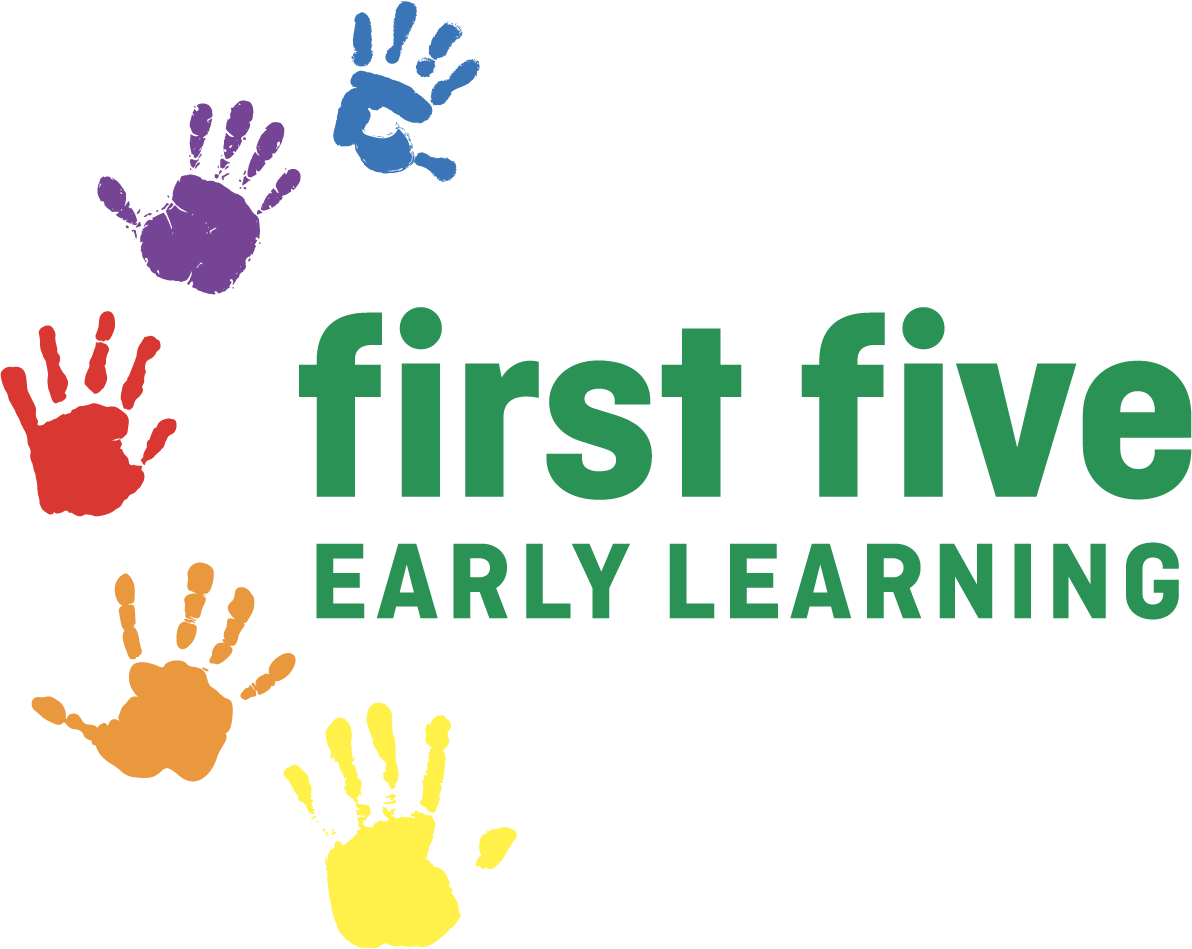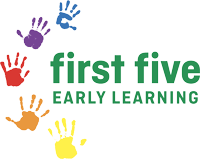
Blog #6: Flags of Significance
At First Five Early Learning centres, four distinct flags are flown within our grounds and visible to families and the local community. Along with the national Australian flag, you will see the Aboriginal flag, Torres Strait Islander flag and Rainbow flag.
First Five Early Learning is a child safe organisation. The National Principles for Child Safe Organisations require us as an organisation to demonstrate the following:
- Standard 4.3: The organisation pays particular attention to the needs of Aboriginal and Torres Strait Islander children, children with disability, children from culturally and linguistically diverse backgrounds, those who are unable to live at home, and lesbian, gay, bisexual, transgender and intersex children and young people.
The National Principles form part of the eleven (11) Victorian Child Safe Standards that require us as an organisation to demonstrate the following:
- Standard 1: Organisations establish a culturally safe environment in which the diverse and unique identities and experiences of Aboriginal children and young people are respected and valued.
The display of the four flags is also supported by requirements in the National Quality Framework (NQF) and the National Quality Standard (NQS) in relation to our responsibilities to families and children, along with principles and Articles from the United Nations Convention on the Rights of the Child.
This blog explains why these four flags are flown, along with their individual meanings and significance.
Flag | History | Meaning | Significance |
Aboriginal Flag | The Aboriginal flag was designed by artist Harold Thomas in 1970 and first raised on July 9, 1971. Harold Thomas is a Luritja man from central Australia and a member of the Stolen Generations. In 1995, the Aboriginal flag was recognised by the Australian Government as an official Flag of Australia under the Flags Act 1953. | The top half of the flag is black to symbolise Aboriginal people. The red in the lower half represents the earth and the colour of ochre which has ceremonial significance. The yellow circle in the centre represents the sun. The artist Harold Thomas states that the colours of the flag represent the Aboriginal people of Australia and their spiritual connection to land. | At First Five Early Learning centres, the Aboriginal flag is flown in recognition of Aboriginal Peoples as the First Australians and Traditional Owners and Custodians of the lands and territories now known as Australia. Along with the display of the Aboriginal flag, an Acknowledgement to Country specific to the local area is displayed within reception as a demonstration of respect. Aboriginal perspectives and resources of an Aboriginal nature are embedded throughout play spaces for all age groups. |
Torres Strait Islander Flag | The Torres Strait Islander flag was designed by the late Bernard Namok, from Thursday Island. The flag was the winning entry in a design competition that was held as part of a cultural revival workshop organised by the Islands Coordinating Council in 1992. In 1995, the Torres Strait Islander flag was recognised by the Australian Government as an official Flag of Australia under the Flags Act 1953. | The green panels at the top and bottom of the flag represent the land. The central blue panel represents the sea. The black lines dividing the panels represent the Torres Strait Islander people. The centre of the flag shows a white Dhari (dancer’s headdress) which represents Torres Strait Islander culture. Underneath the Dhari is a white five-pointed star. The star is an important symbol for navigating the sea. The points of the star represent the five island groups in the Torres Strait and the white symbolises peace. The artist Bernard Namok stated the flag was created as a symbol of unity and identity for Torres Strait Islander peoples. The cultures and traditions of Torres Strait Islanders are strongly connected to the land, sea, and sky — elements represented in the flag. | At First Five Early Learning centres, the Torres Strait Islander flag is flown in recognition of Torres Strait Islander Peoples as a distinct group within the Indigenous population, recognised as the First Australians. Torres Strait Islander perspectives and resources of a Torres Strait Islander nature are embedded throughout play spaces for all age groups. |
Australian Flag | In the lead-up to Federation in 1901, a competition to design an Australian flag was managed by the new federal government. The competition stipulated designs for two flags be provided: one for official use, and one to be used by merchant ships registered in Australia. The results were announced on September 3, 1901, at the Melbourne Exhibition Building. The £200 prize money was divided between five people with nearly identical designs, for what is now the National Flag. | The flag has three elements on a dark blue background: the Union Jack, the Commonwealth Star, and the Southern Cross. The Union Jack in the upper left corner acknowledges the history of British settlement. Below the Union Jack is a white Commonwealth star. It has seven points representing the unity of the six states and the territories of the Commonwealth of Australia. The star is also featured on the Commonwealth Coat of Arms. The Southern Cross is shown on the flag in white. It is a constellation of five stars that can be easily seen from the night skies of the southern hemisphere and is a reminder of Australia’s geography. | At First Five Early Learning centres, the Australian flag is flown as the recognised national flag. |
Rainbow Flag | The Rainbow flag was designed by artist Gilbert Baker and introduced in 1978. Its design was chosen as a symbol of hope and peace. | Each colour of the rainbow flag has a different meaning. Red for life, orange for healing, yellow for sunlight, green for nature, blue for harmony and violet for spirit. The Rainbow flag symbolises pride and diversity within the LGBTQIA+ community. | At First Five Early Learning centres, the Rainbow flag signals to parents within the local community that our centre is a safe and inclusive environment for all children and families. Research tells us that children do better developmentally and in learning outcomes when their parents feel supported and accepted in their local communities. For some families, support and acceptance within the local community can be impacted by discrimination due to peoples’ responses to diversity and difference. When parents experience discrimination, this can lead to social isolation and impacts on mental health which, in turn, impacts how they parent. In early childhood education and care centres, our primary purpose is to partner with parents to support children’s holistic development and learning. When families thrive, children do well. The Rainbow flag signals to parents within our local community that we acknowledge and respect all children’s lived experiences of family and community and strive to be inclusive in our language, centre procedures and teaching practices. |
The display of the above flags is supported by requirements in the National Quality Framework (NQF) and the National Quality Standard (NQS) in relation to our responsibilities to families and children, along with principles and Articles from the United Nations Convention on the Rights of the Child.
- National Quality Framework Guiding Principles
- EQUITY, INCLUSION AND DIVERSITY UNDERPIN THE FRAMEWORK: The NQF recognises all children’s capacity and right to succeed regardless of diverse circumstances, cultural background, and abilities. Inclusion is acknowledged as an approach where diversity is celebrated. It requires educators to hold high expectations for the learning and development of all children, recognising that every child treads an individual learning path and will progress in different and equally meaningful ways. In recognising each child’s experience of learning and development, educators implement responsive, equitable, individualised opportunities and additional support if barriers to success are identified.
- AUSTRALIA’S ABORIGINAL AND TORRES STRAIT ISLANDER CULTURES ARE VALUED: The NQF is underpinned by a commitment to ‘Closing the Gap’ and acknowledges Australia is a nation of great diversity, and an ancient land that has been cared for by Indigenous Australians for many thousands of years. Education and care services have a shared responsibility to contribute to building a better society and sustainable environment and to support children, families, colleagues, and the local community to understand, respect and value diversity. Through all aspects of their practice, educators challenge stereotyping and bias. They find sensitive and respectful ways to negotiate tensions that may arise, for instance, because of differing values, beliefs, and expectations within the local context of the service, and between the local context and the broader contexts of Australian society. Educators take every opportunity to extend children’s understanding of their local context and of their wider world.
- THE ROLE OF PARENTS AND FAMILIES IS RESPECTED AND SUPPORTED: The NQF acknowledges a view of children in the context of their family and community, that families are children’s first and most influential teachers. It is envisaged that education and care services will actively seek out partnerships and develop secure respectful relationships to ensure that families are informed, consulted and supported in regard to their child’s learning and development.
- National Quality Standard: Standard 6.1: Supportive relationships with families: Respectful relationships with families are developed and maintained and families are supported in their parenting role.
- Element 6.1.2: Parent views are respected: The expertise, culture, values, and beliefs of families are respected, and families share in decision-making about their child’s learning and wellbeing.
- National Quality Standard 5.1: Relationships between educators and children: Respectful and equitable relationships are maintained with each child.
- Element 5.1.2: The dignity and rights of every child are maintained.
- United Nations Convention on the Rights of the Child:
- Preamble … the family, as the fundamental group of society and the natural environment for the growth and well-being of all its members and particularly children, should be afforded the necessary protection and assistance so that it can fully assume its responsibilities within the community.
- Article 29: The education of the child shall be directed to: (c) The development of respect for the child’s parents, his or her own cultural identity, language, and values; (d) The preparation of the child for responsible life in a free society, in the spirit of understanding, peace, tolerance, equality of sexes, and friendship among all peoples, ethnic, national, and religious groups and persons of indigenous origin.
- Article 30: I have a right to speak my own language and to follow my family’s way of life: … In those States in which ethnic, religious or linguistic minorities or persons of indigenous origin exist, a child belonging to such a minority or who is indigenous shall not be denied the right, in community with other members of his or her group, to enjoy his or her own culture, to profess and practise his or her own religion, or to use his or her own language.
Dr Melinda Miller
Director of Early Learning






